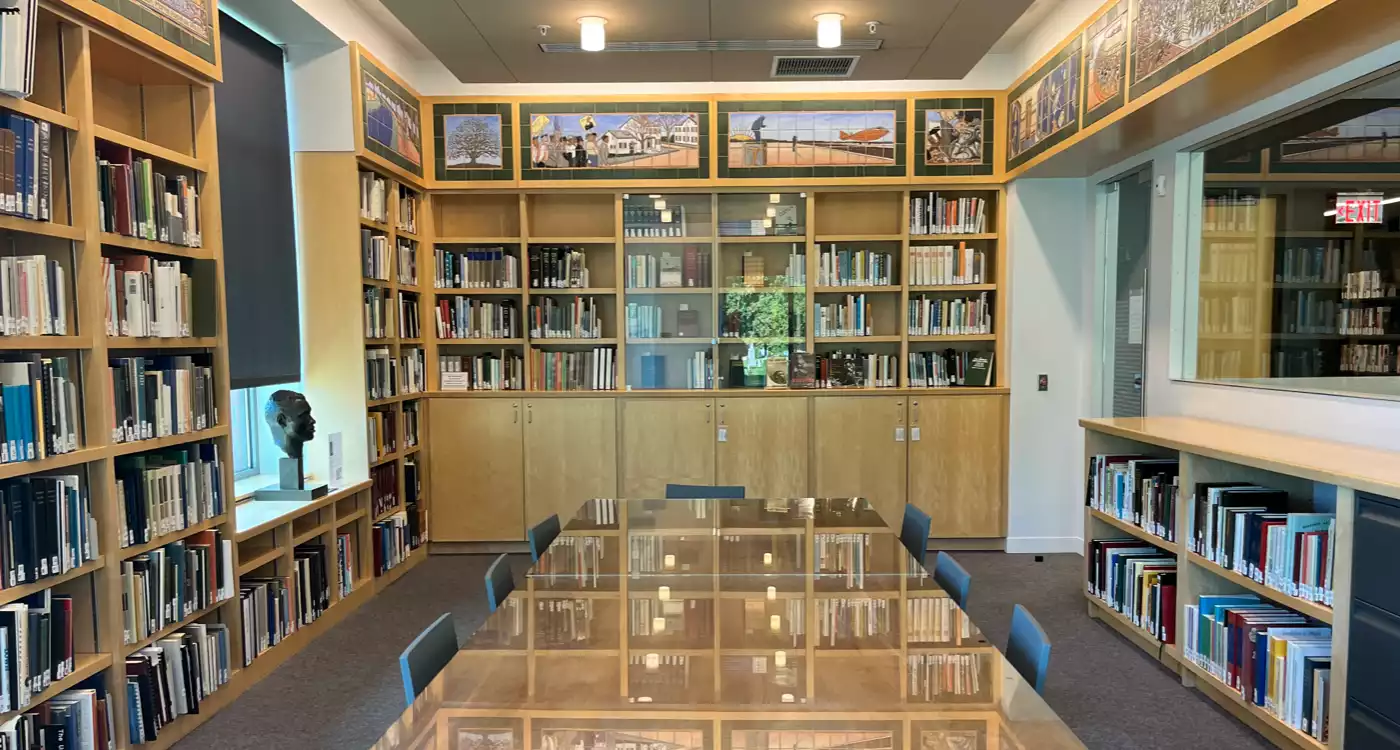
My favorite thing about Princeton isn’t the picturesque walks on campus, the friendly faces or the abundance of good coffee shops (and there are many!). It’s that this town has such a deep, rich history that there is always something new and interesting to learn. Luckily, I work at Princeton Public Library where resources are plentiful and research assistance is just a stone’s throw away.
The library receives many calls, emails and visits from researchers investigating a specific topic or person in town, and from everyday folks who are simply curious about their genealogical history or a tidbit about Princeton. While there are some valuable online resources we consult, such as Papers of Princeton, my favorite place to research is in the library’s Princeton Room.
Located on the second floor of the library, the Princeton Room houses the library’s Local History Collection, a collection consisting of books, DVDs and maps related to Princeton history. While the glass cabinet in the room houses materials that are not for public use, it is surely enjoyable to gaze in and view the collection of John McPhee first editions. Currently on display is The Deltoid Pumpkin Seed, positioned directly below the artistic tile of the Aereon 26 by Katherine Hackl, the subject of McPhee’s book. Also in the cabinet is Lovey Mary by Alice Hegan Rice, one of the first books in the library’s collection.
There are so many “go-to” books for answering research inquiries. One of my favorites is On the Streets Where We Live by Randy Hobler and Jeanne Silvester. This book details the origins of most of the street names in Princeton. For example, Spring Street was the site of a spring and a pond next to nearby Vandeventer Avenue. They were filled in and covered up by 1902 but still flow below the bustling library. Another favorite is Old Princeton’s Neighbors. It was in this book that I first read about Jugtown, a section of Princeton known for its mature trees and historic homes surrounding the intersection of Harrison and Nassau Streets. Filled with wonderful details of the community, the anecdote I repeat most often is that of William H. “Billiam” Leggett, Police Marshal of Princeton in the early 1880s. When discussing a run-in with the law in Princeton, one visitor quipped that “he was the terror of evildoers for miles around. Leggett was almost six feet tall in his bare feet, weighed 230 pounds, and did not know what fear was…Another time he arrested a “bad man” from the West. At the Hulfish Street Jail the prisoner – then sobered – said: ‘If I’d knowed I was in Princeton, I wouldn’t have got drunk. The Marshal of Princeton is known as far as the Rio Grande!’”
While all the items contain invaluable information useful for answering varied research questions on Princeton history, there are certain titles that I always find particularly amusing and entertaining. The Gargoyles of Princeton University and The Tigers of Princeton University provide not only a history but a tour of the gargoyles, grotesques and tigers on campus. A Map Showing a Sanitary Survey of Princeton and Vicinity from 1915 details cases of Malaria in town. And finally, what blog post of Princeton history would be complete without a little library history? Money, Space, and A Pile of Books by Meghan Leigh Glass and A Narrative History of the Princeton Public Library by William K. Selden give the reader an in-depth look at the history of Princeton Public Library, from Bainbridge House to Witherspoon Street.
The Princeton Room at Princeton Public Library is my favorite place to wander, roam, explore and simply “get lost” in my own curiosity. I mentioned some of my favorites but there are so many more books and resources worth checking out. To get started, visit our Princeton and Local History Resource Guide. If you have any questions along the way, ask us. We’re here to help.
